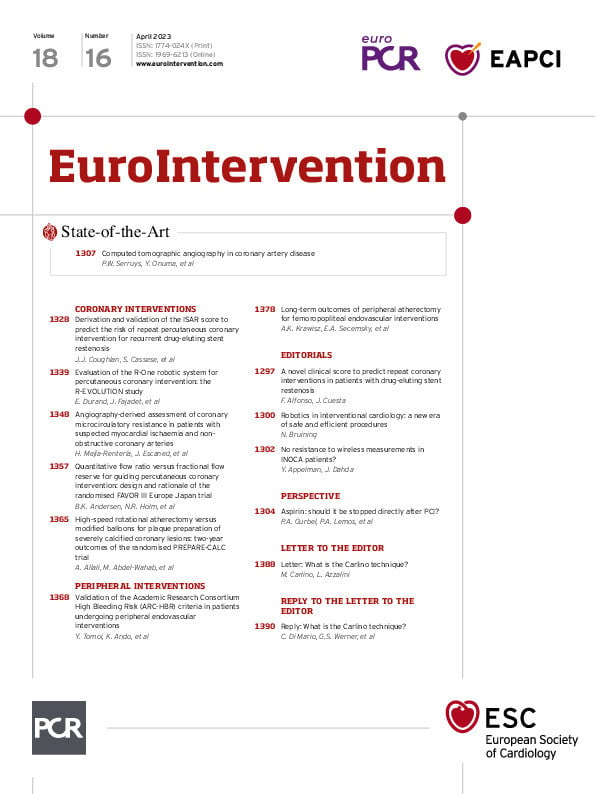Ischaemia and non-obstructive coronary artery disease (INOCA) is a common but often overlooked disease found predominantly in female patients with chest pain symptoms. Patients and attending doctors often become aware of this potential diagnosis after coronary angiography offers no explanation for the patient’s ischaemic symptoms. Despite many believing these patients have a favourable profile, in fact they have worse outcomes and impaired quality of life, leading to a high economic burden for society. Given the importance of the diagnosis, it is recommended to conduct additional coronary functional testing to investigate the possible underlying mechanisms behind the symptoms. Based on the results of these invasive tests, different endotypes have been proposed: vasospastic angina (epicardial vasospasm) and coronary microvascular dysfunction (CMD), i.e., 1) impaired vasodilation with a high index of microvascular resistance (IMR) and/or low coronary flow reserve (CFR); 2) increased vasoconstriction of the coronary microcirculation1. These endotypes can coexist.
In this issue of EuroIntervention, MejÃa-RenterÃa et al describe the validation of a novel, wireless, non-hyperaemic coronary angiography-derived method for assessing IMR (cAngio-IMR), comparing it to the conventional wire-based thermodilution-derived IMR (thermo-IMR) in suspected INOCA patients2. This approach relies on analysing coronary angiography through software that integrates computational fluid dynamic and 3D vessel reconstruction and then calculating cAngio-IMR with a formula utilising parameters obtained from standard angiography. They show that the proposed method has high diagnostic accuracy (85%) and high discriminatory power to identify abnormal thermo-IMR (>25 U). Also, surprisingly, the cAngio-IMR derived from resting angiograms had a better diagnostic yield than those from hyperaemic angiograms. As reported by the authors, this could be attributed in part to the challenges in achieving optimal coronary opacification during hyperaemia.
Thermodilution is one of the most frequently used methods for assessing the resistance of the coronary microcirculation at hyperaemia, but it is not exempt from pitfalls. First, the measurement depends to a certain degree on the injection technique of the operator using a 3-5 cc syringe at room temperature and other sensitive steps prone to potential error3. Secondly, the correlation between thermo-IMR and other methods to assess the resistance of the microcirculation is, at best, modest4. In the study by MejÃa-RenterÃa et al, the first point was controlled by experienced operators in the tertiary hospital where the study was performed and by quality checking in an independent core laboratory. Despite its drawbacks, and without a universally recognised clinical gold standard, thermo-IMR is one of the recommended methods to evaluate microcirculation resistance.
Although the use of cAngio-IMR seems promising for implementation in daily practice, a more precise discrimination is needed between the different endotypes. Vasospastic angina is highly prevalent in INOCA patients (60-80%), with a favourable prognosis, but is highly symptomatic and needs tailored treatment. In a way, the present study supports this, as only 41% of the patients had impaired IMR or CFR, underscoring the importance of including spasm provocation testing. As acknowledged by the authors, this could potentially explain the significant mismatch between the results of non-invasive ischaemia testing (80% treadmill stress test) and cAngio-IMR. CMD patients with high microvascular resistance have discordant prognoses. A meta-analysis of 8 studies (1,097 patients, heterogeneous diagnoses) found a slight, significant protective effect of normal IMR on major adverse cardiovascular events (MACE)5. Conversely, Boerhout et al showed that high microvascular resistance is not a predictor of MACE in patients with angina and no obstructive coronary artery disease (ANOCA). The patients with ANOCA and low CFR correspond to a group with unfavourable prognoses, with an increased risk of MACE (11.7% at 5-year follow-up)6.
From a clinical perspective, IMR measurement should be associated with CFR and provocation test results to obtain a more accurate classification of the underlying pathophysiological mechanisms driving inadequate myocardial perfusion as well as to define the prognosis and treatment of these patients.
We congratulate MejÃa-RenterÃa et al for this seminal publication, which invites us to think of new strategies to guide the diagnostic workup of patients with suspected INOCA. This type of "less invasive" approach, which avoids the need for supplementary catheters, and the use of hyperaemic agents with their consequences (dyspnoea, chest pain, hypotension, and others), could facilitate the expansion of coronary functional testing to healthcare centres with limited access to dedicated catheterisation equipment, thereby providing a valuable tool for the diagnosis and management of this growing patient population.
However, relevant physiological information must be included to develop this method into a more comprehensive and complete tool. Some early studies have highlighted the possibility of computing CFR based on angiography. More recently, Rittger et al showed that angiographically-derived CFR correlates very well (R=0.87; p<0.01) with intracoronary Doppler CFR7. We encourage the investigators to continue this important line of research and attempt to articulate it with a more detailed wireless physiological assessment of the microcirculation.
Conflict of interest statement
The authors have no conflicts of interest to declare.

